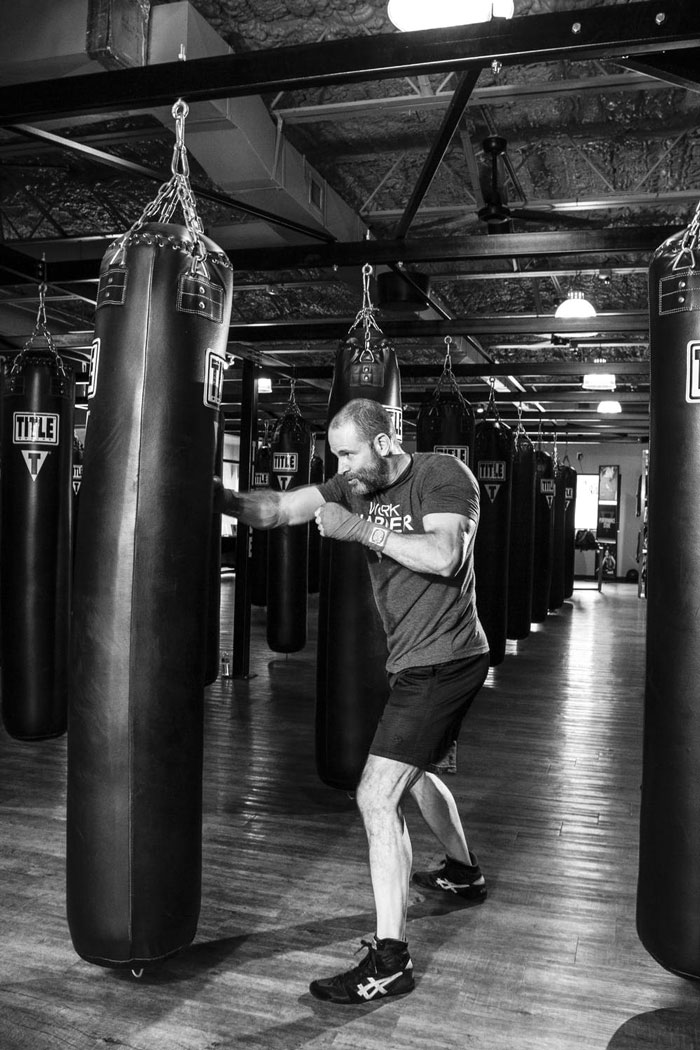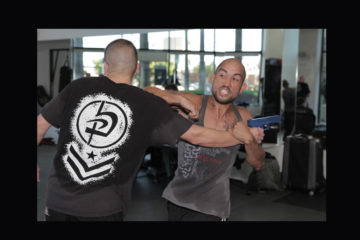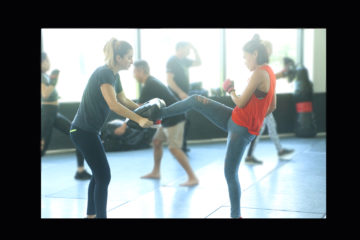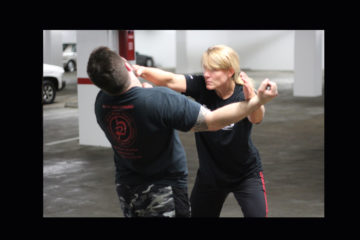To make the most of your training, the right clothing and gear are essential. Proper gear helps your form, which prepares you for defense against assailants, and can protect you and your sparring partner from injury. Gear that is designed for other combat sports (such as karate, jiu jitsu, etc) may not meet the requirements of Krav Maga Worldwide training.
Be prepared for training with the right Krav Maga gear, and when in doubt, always consult your instructor.
Krav Maga Clothing
Basic athletic clothing is a good place to start. This can be shorts and a t-shirt, a tank top, or long pants such as sweatpants or yoga pants. Your clothes should be flexible and comfortable enough not to inhibit your full range of motion.
Certain materials work better than others. A cotton or cotton-blend tee helps wick moisture away. You can also get Krav Maga clothing that will represent your affiliation.
Rash Guards - Available in long and short sleeves, rash guards are similar to a spandex t-shirt. During grappling, your skin can be pulled or abraded by your partner’s grip or the training mat. Rash guards help to protect your skin, and fit snugly to allow you full range of motion, wet or dry.
Krav Maga Gear Basics
Krav Maga is a self-defense and fighting system intended for real-world survival situations. The closer your training is to the real deal, the better prepared you will be. This means you’ll need protective equipment padding thick enough to strike and be struck hard without fear of injury.
These are a few essentials you can’t -- or shouldn’t -- train without. Whether it’s for utility or safety, these pieces of clothing and equipment should always be in your gear bag.
Wearable Protective Pads - At the very least, mouthpiece, gloves, headgear, groin protector, and shin guards should all be personally-owned. These pieces of equipment catch a lot of sweat, saliva, and occasionally blood. You don’t want to share.
While your training facility may have a loaner or shared Krav Maga gear like shin pads, hand and wrist wraps, or headgear that you can borrow, owning your own is more hygienic. It’s also best to have equipment that fits you correctly and is in good repair. Safety pads should help protect you from dangerous impacts during training and provide a range of motion sufficient to have a realistic training experience.
Bags And Gloves - Striking is a key part of your offense, so make sure your punches and kicks are up to snuff. Bag or boxing gloves give your hands additional protection as you strike. Open-finger MMA-style gloves provide minimal padding, but a more natural fighting feel. Heavy bags are a great all-around training aid to add to a home gym, but the addition of a speed or rhythm bag can help you fine-tune your timing.
Advanced Gear

This Krav Maga gear falls into the “nice to have” category. Whether you’re just looking to avoid loaner gear (and other peoples’ old sweat) or round out your at-home equipment, these items are great to have on hand.
Your training center will most likely have equipment of these types for use in your training, so pick up extra Krav Maga clothes and gear as you need it.
Pads - If you’re working out with a partner, mitts and target pads are great for both structured routines and reaction drills. Thai pads provide a larger target area and more padding for the hardest kicks. Shields work well for aggression drills.
Dummies - You can’t put an armbar on a heavy bag. Grappling dummies are the anatomically similar Krav Maga gear you need to safely practice alone or with a partner. Meanwhile, throwing dummies give you a tough bag you can use and abuse as you practice strikes, holds, and throws.
Training Weapons - While it may look cool on the movie screen, using real weapons in training is a great way to visit your local emergency room. Leave the real guns and knives secured and use professional-grade training weapons instead. This Krav Maga training gear is designed to mimic common bladed weapons and firearms. They are important for practicing weapon drills safely while providing you and your partner equipment with the same weight and hand feel of the real thing.
Training Resources - Books and DVDs don’t teach you as well as a live instructor, but they’re a resource for home study and brushing up on fundamentals. Clear step-by-step instructions geared toward the way you learn can help advance your technique between lessons or keep you sharp through extended absences.
Quality Over Quantity
When selecting the right Krav Maga gear or clothing to practice with, make sure you’re getting equipment that stands up to the rigors of training. “Value” equipment isn’t a good value if it needs frequent replacement. If you need tips on what to look for in professional quality training aids, contact a Krav Maga Worldwide location or affiliate and speak with a certified instructor.






